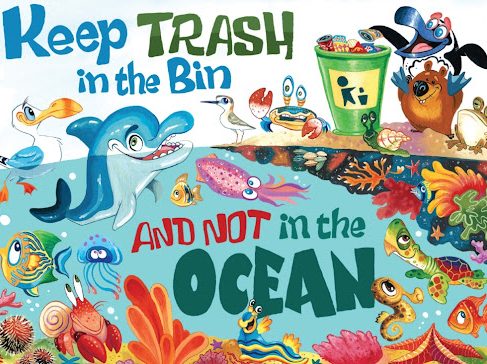RiverWise
Issue 35 ~ August 2021
The monthly newsletter of the Lower Breede River Conservancy Trust
Have you renewed your boat licence yet?
Annual Municipal Boat licenses are due for renewal every year from 1 July and valid until 30 June the following year.Just a reminder of our outlets available for boat license sales for 2021/2022
MALGAS OUTLET:
Living the Breede
Phone: 067 162 9081 or 082 324 2757
Open: Mon-Sun from 08:00 - 17:00
RIVERINE OUTLET:
Breede Riverine Estate
Phone: 028 542 1345
Open: 09:00 – 17:00
WITSAND OUTLETS:
Lower Breede River Conservancy Office
Phone: 028 537 1296
Open: Mon-Fri 08:00 - 16:00
SWELLENDAM OUTLETS:
Heyneman Yamaha
Phone: 028 514 2010
Open: 08:00 – 17:00
Infanta Inflatables
Phone: 028 514 1589
Hours:08:00 - 17:00 Monday to Thursday
08:00 - 16:00 Friday, Closed Weekends
ONLINE LICENSES:
Buy your boat license online and arrange to pick up your disk at Living the Breede (Malgas) or LBRCT office (Witsand)
https://breede-river.org/licences/
Contact our office if you have any questions regarding the boat licenses - 028 537 1296 / info@breede-river.com
In this issue
The month of August was cold and wet, but we still managed to get out and about. The team has been kept busy by attending educational courses and workshops, conducting our monthly operations and assisting the police with law enforcement. Our conservation ranger joined up with Matthew Schurch from the Landmark Foundation to check the camera traps around the Infanta Potberg area (photos included). Additionally, the LBRCT assisted CapeNature with their winter CWAC count (coordinated waterbird count).
Follow us on your favourite social media platform to see what we are up to daily!
Operation Phakisa
On the weekend of 14 August our rangers assisted officials from the Department of Environmental, Forestry and Fisheries (DEFF) as well as members of the police from Mossel Bay and Stilbaai. We provided logistic support, vessels for water patrols and contributed additional manpower.

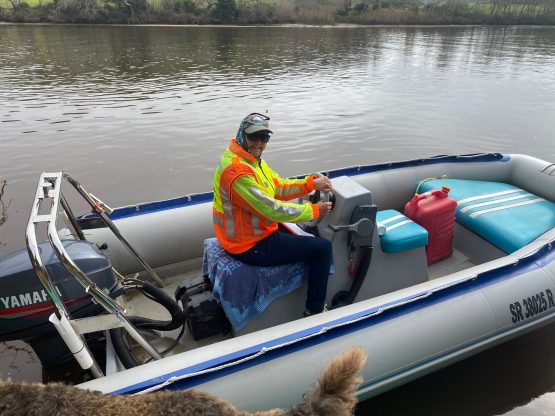
Infanta Camera Traps
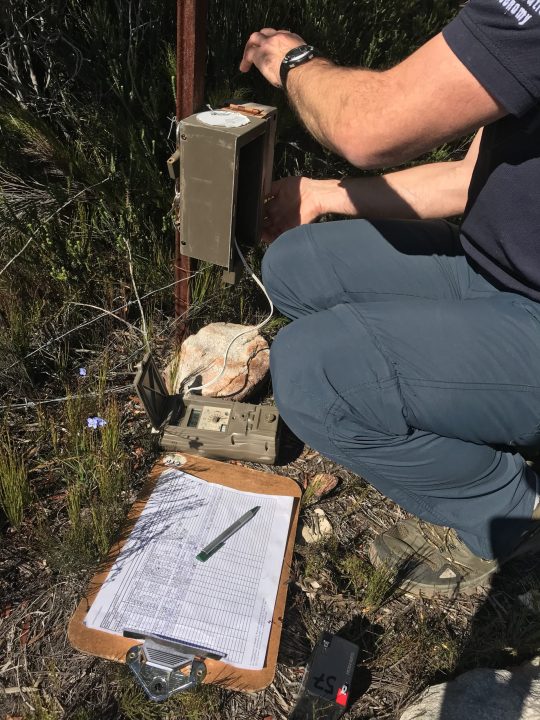
The Landmark Foundation works closely with the Cape Leopard Trust, CapeNature and private land owners in an effort to bridge relationships between land owners and conservationists, with a specific focus on leopard conservation in the Cape. Many land owners see leopards as pests that prey upon their livestock and therefore need to be dealt with. This has lead to hundreds of mortalities across the country. The Landmark Foundation identifies owners that struggle with livestock losses to predators and sets out to help explain the reasons and possible solutions to the problem. Firstly, camouflaged camera traps are established at many different locations so that over time the species diversity and probable culprits in area can be determined. These camera traps are great tools for conservationists as they allow the above mentioned organizations to gather useful data in a non-invasive manner. Often the questions that are asked are: Are leopards even present?; Is there more than one leopard in the area; What other predators could be responsible?; What does the species diversity look like?, etc.
These are all important questions to ask because the answers might persuade the land owner not to take serious action in future. For example, if the same leopard is consecutively identified in a certain area and only occasionally preys upon a farmer's sheep, the Landmark Foundation may decide to enter into an agreement with the farmer; If the farmer agrees not to set out any traps (which can capture other unfortunate animals that shows interest in the bait) the organization will reimburse the farmer for any losses of livestock from that time onwards. Sometimes, however, farmers frequently suffer losses from more than one big cat in the same area. This can often be problematic, but if it is deemed necessary the Landmark Foundation will catch and relocate one or more of the problem cats to another suitable area. This method has worked in the past, and it also increases the genetic diversity of the recipient region.
These are just a couple of initiatives that the Landmark Foundation is running to mitigate tension and ultimately protect the leopard population along the Cape Fold mountains.
Recently, our conservation ranger joined up with Matthew Schurch to check the camera traps that are established around the Infanta area. Unfortunately no leopards have been recorded in this area for the last two years now. Matthew reckons this is a fairy normal pattern, as leopards are highly territorial animals that have the tendency to shift their ranges in relation to other leopards for breeding reasons and food availability. Nevertheless, a great diversity of animals were caught on camera, including caracal, porcupine, baboons, honey badgers, eland, duikers, and other bokkies!
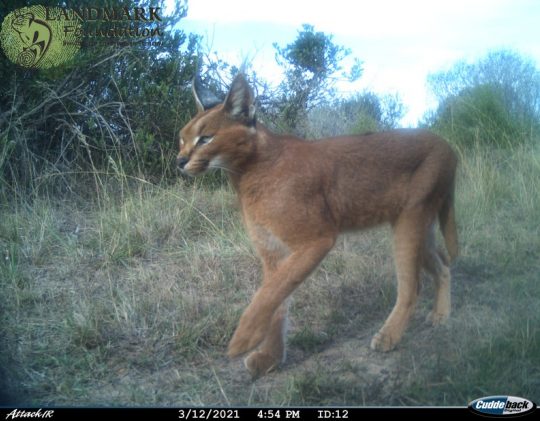
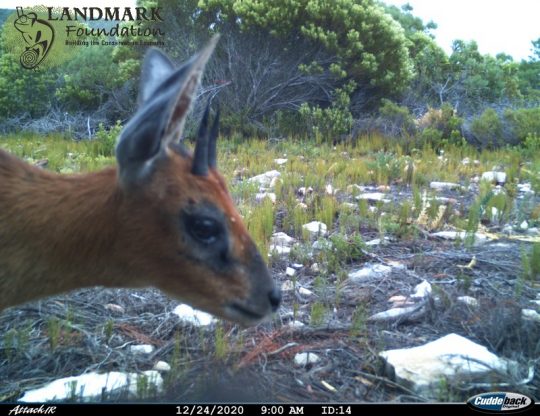
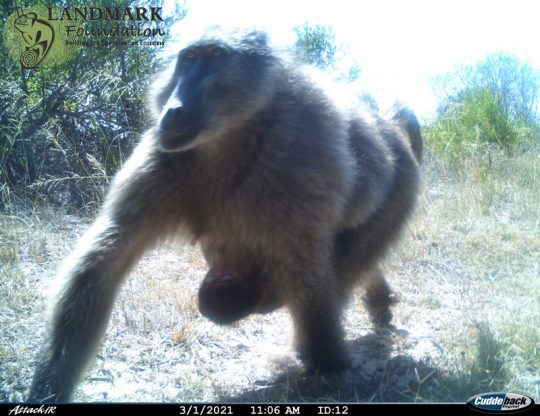
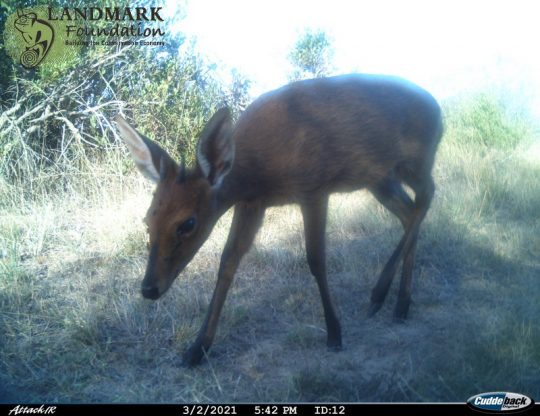
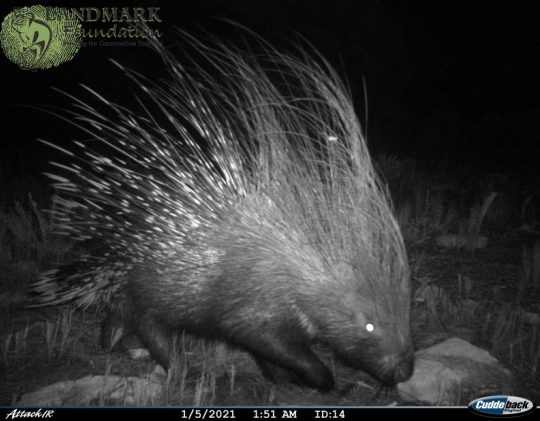
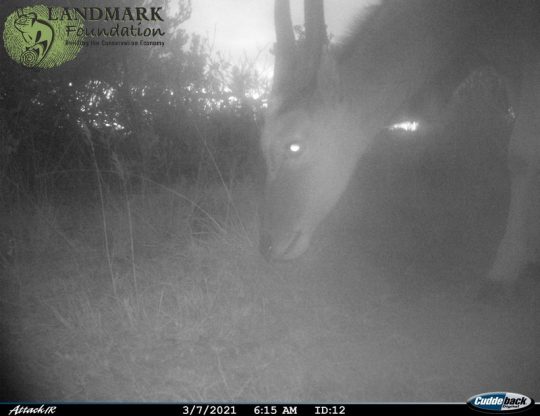

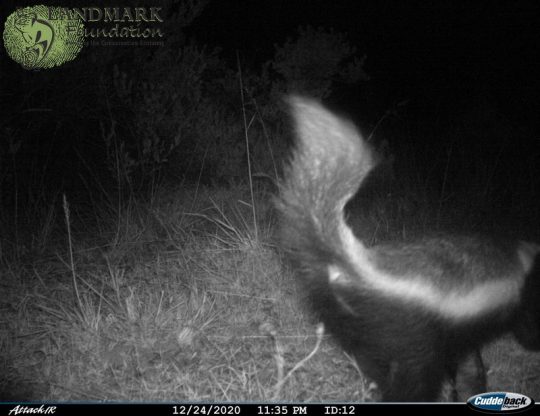
Home Protection Course
During August our rangers and students attended a Home Protection Course in Malgas presented by the Greater Overberg Fire Protection Association. The course was very informative with a main focus on fire protection and prevention, including fire jargon and spread, communication practices during firefighting, and even land owner legislation relating to fire damage.

SAMSA Workshop
The LBRCT arranged an interactive workshop with the South African Maritime Safety Authority (SAMSA) to keep our understanding on small vessel compliance up to date. Many topics were discussed, including COFs, skippers licences, vessel categories, buoyancy certificates, and registration numbers. The workshop went well and as always SAMSA placed a strong emphasis on vessel safety.
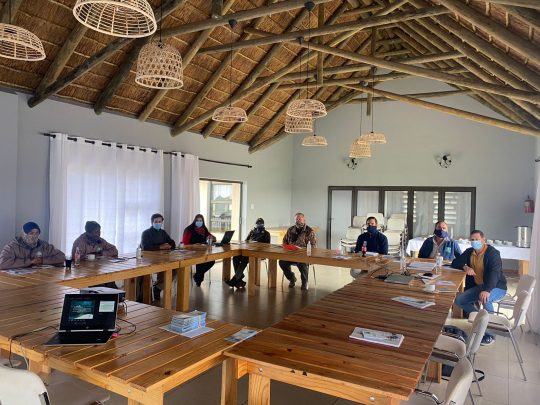
In the data
Monthly routine monitoring
August bird counts
Our monthly bird count was conducted on 20 August. Wet set out as soon as the mist disappeared. A total of 24 species were recorded, with the most common birds being the Egyptian goose (64), White-breasted cormorant (50), and Swift tern (41). Some interesting sightings were of three Great crested grebes, one Klaas's cuckoo and a species of woodpecker which we didn't manage to identify.
CapeNature winter CWAC count
The LBRCT assisted CapeNature with their winter coordinated waterbird count (CWAC). Here are the results!
August water quality
We started the water quality run at the mouth (12.71 PSU) and headed as far up as Lemoentuin (0.5 PSU). The site with the highest salinity was at Moddergat (6km upriver) with a salinity reading of 25.12 PSU. The site with the lowest salinity reading was 17km upriver with a reading of 0.43 PSU. The water temperature was cold, averaging between 13 and 14 degrees.
Beach cleanup
Our rangers pick up rubbish regularly along the beaches and estuary banks.

International Coastal Cleanup
Please join us for the International Coastal Cleanup happening in September! We will all gather at 10:00 and groups will be assigned a coordinator. The coordinator will keep record of all rubbish types picked up for their group.
Witsand:
Friday, 17 September
10:00
Meet: Anchorage
Infanta:
Saturday, 18 September
10:00
Meet: Infanta slipway
Photos of the month
The photo-of-the-month competition is an initiative which the LBRCT is promoting whereby members of the public can send us their photographs of anything related to the natural beauty of the Breede River! Please send your photos to conservation@breede-river.org.
August's photo-of-the-month is of Nomad dragonflies performing a pre-mating practise where the male attaches to the back of the females head with claspers located at the end of his abdomen. The two fly in tandem until the female is ready to mate. She will then curl her up and the dragonflies will form a heart shape during mating.
Photo credit: Jason Oxley (Instagram @oxleysnaps)
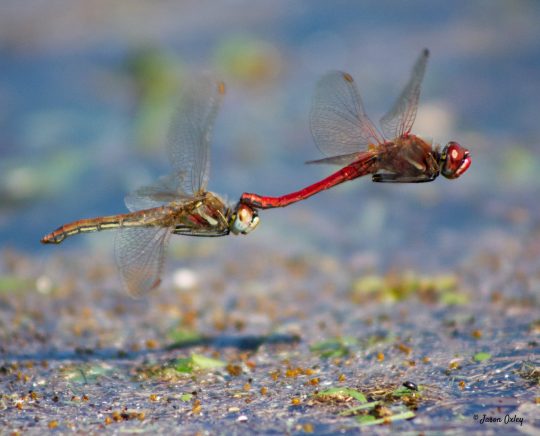
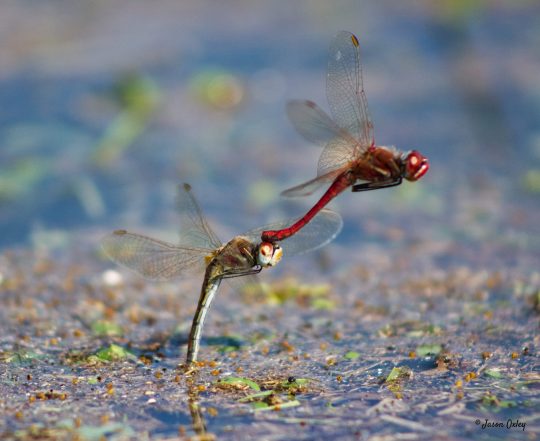
Thank you for reading
We hope you enjoyed this months' issue. Should you have any feedback, questions, or matters you would like us to cover in a future issue, please do not hesitate to write to us at news@breede-river.org.
